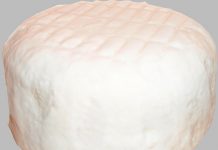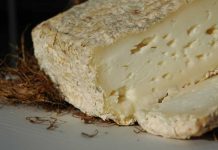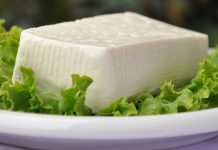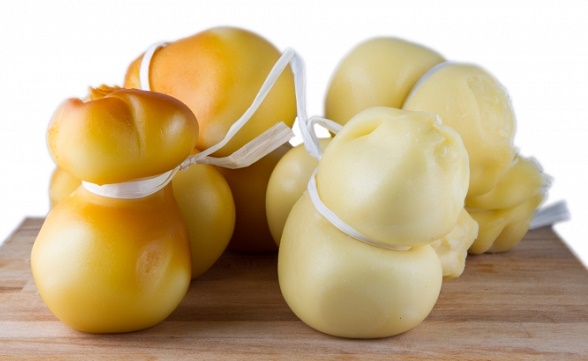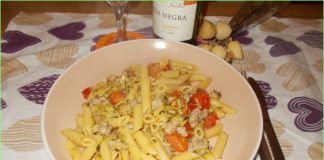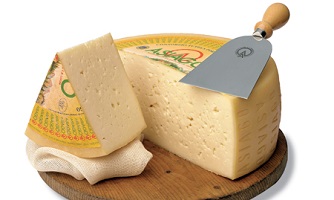
The history
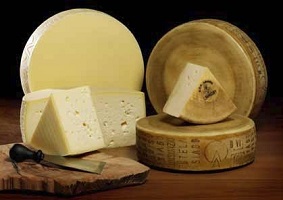
Asiago is a cheese made with cow’s milk and semi-cooked paste, protected by designation of origin. The history of this product has Been lost over time together with that of the population of the Asiago Plateau from which it derives its name. There are very few evidence relating to the previous centuries of the year 1000. Sheep farming was the predominant activity between the tenth and fifteenth centuries in the highland of Asiago, a very fertile soil that produced good herbs.
Here was a good cheese of sheep’s milk, obtaining also the wool textile and handicraft activities at first, then the industrial ones of valleys of Alto Vicentino.
With the passing of the years and with the modernization of techniques, the 1500s saw the gradual replacement of sheep with cattle. Only around the nineteenth century such a replacement was completed. Until the middle of the 19th century the production of Asiago was done on the plateau of the same name, but then gradually spread in the foothills surrounding lowland areas and nearby huts from Trentino. The causes of this diffusion, was the depopulation of the plateau of the seven common during World War I.
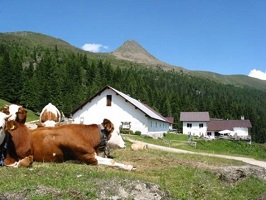
In that period they produced Asiago d’Allevo also called “Palmer” in the local dialect, whose shapes after months of seasoning, were cut and had a fragrant texture. It was made from milk of Pezzata Nera e Bruno Alpina cows. Around the 1920s, began the real production of Asiago, but short maturing period, also called pressed Asiago, because just-produced forms, manual or hydraulic presses were shaped through a press. In 1995 it received the Typical Denomination of Asiago cheese, and later with the P.r.decree of 21 December 1978 was given the designation of origin. A year later the “Consortium for the Protection of Asiago cheese”, created by 56 companies for the protection of the characteristics of dairy production, with the aim to improve the product quality and quantity, promoting it commercially and to watch over the naming, managing any prosecutions to repress irregularities and abuses. Asiago was hungry and fortune, only in the present century, production was larger in increasing amounts and managed to satisfy to the market. Today The Asiago DOP cheese from cow’s milk is the fourth in our country, for the quantity produced. More than 95% of Italians consumes this cheese.
Production areas
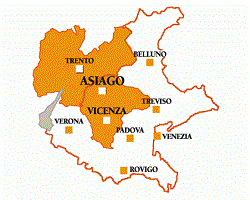
Asiago cheese is produced in the areas of Vicenza and Trento and neighboring parts with them “Padua and Treviso.” The production of Asiago is typical of the plateau and occurs in numerous dairies, or in the summer in the mountain huts (in Italian Malghe, locals for the production), often privately owned or collective.
More than 100 huts are the Plateau of Asiago, and make up for their size and number, the most important mountain pasture system in the Alps.
Typology
The Asiago cheese is produced in two different types: “fresh pressed”, or “d’Allevo seasoned”, which in turn then depending on the curing time, is divided into three categories.
The Asiago “pressed” is produced using whole milk, and worked as “semi-row” paste.
During the first firing at 35 degrees, adding to it specific enzymes and liquid rennet. Once obteined the curd, we proceed to remove the serum and break it to the size of a walnut shell, and then annealed at about 45 degrees. Once this has completed, you run to the first dry salting, then putting the paste in special perforated wall molds. After the form is pressed with a hydraulic press, for about four hours.
Subsequently, the forms are then wrapped laterally with a plastic cylindric mold, which imparts the Asiago mark all around the shape and after are put on a local by the name “frescura” (coolness) for about two or three days to dry.
When this task is completed, the cheeses are salted again by a brine bath, and finally they start to mature for a period ranging from twenty to forty days. The finished cheese has a cylindrical shape of diameter of 30-40 cm and height of 15 cm. A form of Asiago, weighing on average 11-15 kg.
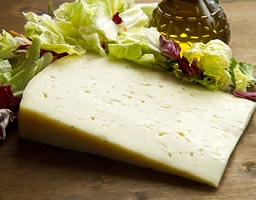
Asiago d’Allevo: its processing semi-cooked, comes from dairy cows milked twice, morning and evening, and a skimming through natural separation. The curd is broken with a special tool called “spino“, so as to reach the size of a grain of rice.
The curd is cooked twice, first at 40 degrees, then 47, and the crude product, once placed in the molds that imprint the Asiago brand, is soaked in a light brine and then matured. Once you cut a slice of Asiago cheese, wrap in a 8-9 degree temperature film. The fresh Asiago is kept less than that of breed, so its consumption should be faster. That is if ripened Stravecchio (super old), is preserved with good results wrapped in a canvas, even at higher temperatures.

